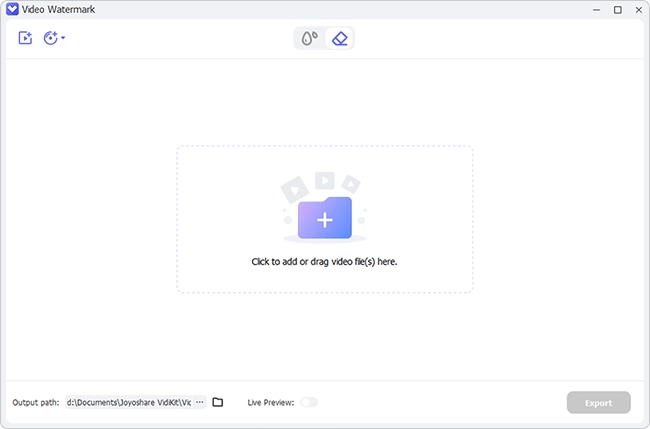Adobe Stock is a comprehensive platform that offers a vast library of high-quality stock images, graphics, videos, and templates. It caters to creatives, marketers, and businesses, allowing them to enhance their projects with visually compelling content. However, to protect the rights of creators, Adobe Stock uses watermarking as a key feature for all its assets before they are purchased. This document explores the functionalities of Adobe Stock and the significance of watermarking in stock photography.
What is Adobe Stock and How Does it Work

Adobe Stock is a service provided by Adobe that allows users to browse a large collection of stock assets, including photos, illustrations, and videos, all integrated within Creative Cloud applications. Users can search for specific content using keywords, filter results by various criteria, and preview assets directly in their creative projects. Adobe Stock operates on a licensing model whereby customers can purchase credits or subscriptions to download images and use them legally in their projects. Asset previews are initially displayed with watermarks to ensure that creators retain their rights until the assets are purchased and licensed properly.
The Importance of Watermarking in Stock Photography

Watermarking serves a critical role in the stock photography industry, particularly for platforms like Adobe Stock. These watermarks act as protective measures for the photographers and artists who create the content, ensuring that their work is not used without compensation or appropriate licensing. Watermarked images allow potential buyers to evaluate the assets in context while discouraging unauthorized use or distribution. Furthermore, watermarks maintain the integrity of the creator’s brand by ensuring that the quality and uniqueness of their work are preserved until they decide to license it. This system strikes a balance between showcasing artistic talent and safeguarding intellectual property.
How Adobe Stock Implements Watermarking

When you browse through the vast collection of images on Adobe Stock, you may notice a distinctive watermark overlaying the images. But why is this important? Watermarking serves several key purposes:
- Copyright Protection: The watermark is a way to protect the intellectual property rights of creators and ensure that their work isn’t used without permission.
- Promoting Licensing: By visibly marking the content, Adobe Stock encourages users to license the images properly before use, ensuring that artists get credit and compensation.
- Trial Purpose: The watermark allows potential buyers to evaluate images in a real-world context, giving them a better feel for how an image might fit into their project.
Adobe Stock uses a watermark that doesn’t interfere significantly with the image’s composition, allowing users to see the image’s core value while still emphasizing that it’s protected. When a user licenses an image, they receive a high-resolution, clean version without the watermark. This process helps maintain the integrity of the images and assists buyers in making informed choices.
Moreover, watermarked images can be used for presentations and concept designs, helping clients visualize ideas without risking unauthorized use.
Different Types of Licenses Offered by Adobe Stock
Adobe Stock provides a range of licensing options to cater to various needs, whether you’re a casual user, a small business, or a large enterprise. Here’s a breakdown of the main types of licenses you’ll encounter:
| License Type | Description |
|---|---|
| Standard License | This license allows you to use the image in most projects, including digital and print media, with some limitations on distribution. |
| Extended License | With this option, you receive all the benefits of a standard license, plus additional rights, like using the image in merchandise or products for resale. |
| Editorial License | Perfect for journalism or educational purposes, this license restricts the use of images for non-commercial activities and requires proper attribution. |
Choosing the right license is crucial for ensuring that your project remains compliant with legal standards while also respecting the rights of content creators. Always take time to read the terms fairly meticulously to determine which license best fits your needs, so you can fully leverage the fantastic resources Adobe Stock has to offer!
Navigating Adobe Stock’s Licensing Options
When diving into the world of stock images, understanding the licensing options offered by Adobe Stock is crucial for any project. Adobe Stock provides a few different licensing types that cater to the varied needs of designers, marketers, and businesses alike. Here’s a breakdown of the available licenses:
- Standard License: This is the most common type of license. It allows you to use the images for both commercial and personal projects, but there are limits on things like print runs (maximum of 500,000 copies) and some restrictions on merchandise.
- Extended License: If your project requires broader usage, this is the option for you. The extended license provides additional rights, such as unlimited print runs and the ability to use images on items for resale—perfect for products like t-shirts or mugs.
- Enhanced License: Available for specific high-end needs, this license is tailored for unique projects. It includes all the benefits of the extended license but with added flexibility regarding exclusivity and distribution.
Choosing the right license is essential to avoid any legal issues down the road. Take a moment to consider:
- What will you use the image for? (Marketing, social media, print, merchandise, etc.)
- How many copies will you distribute?
- Do you need exclusivity or specialized use cases?
Understanding these options allows you to make informed decisions and choose the right path for your project while staying compliant with copyright regulations.
How Watermarking Affects Your Usage of Stock Images
Watermarking is a significant feature of stock images, especially when it comes to platforms like Adobe Stock. You’ll often encounter watermarking on images you’re previewing. Here’s what you need to know:
Purpose of Watermarking: Watermarks serve as a protective measure for the intellectual property of the photographers. They ensure that creators are credited for their work and discourage unauthorized use.
Here are some key points to understand about watermarking:
- Preview Use: Watermarked images can be used for mockups or presentations to give clients or team members an idea of the final product. It’s important to note that using these in any public-facing material is not permitted.
- License Requirement: To remove the watermark and gain full rights to an image, you must purchase a license. Only then can the image be used in the formats it was intended for—whether that’s for commercial use or personal projects.
- Reputation Matters: Using watermarked images without purchasing a license can lead to legal repercussions. It’s best practice to always respect the licensing terms set by Adobe Stock.
Understanding how watermarking works helps you navigate the world of stock images responsibly. Remember, respecting these guidelines not only protects you but also supports the talented creators behind the images!
Frequently Asked Questions about Adobe Stock Watermarking
When diving into the world of Adobe Stock, you might find yourself with a few questions regarding watermarking. Here’s a quick rundown of some of the most frequently asked questions to help clarify any confusion.
What is the purpose of watermarking?
The primary purpose of watermarking is to protect the copyright of the licensed images. Watermarks ensure that potential buyers can view the image and its quality, but they help prevent unauthorized use or distribution.
Can I use watermarked images for commercial purposes?
While you can use watermarked images for concept presentations or mock-ups, you should not use them for any commercial purposes. To legally use an image in your projects, you must purchase the proper license to remove the watermark.
How do I remove the watermark from an image?
Once you’ve purchased a license for an image, you can download the high-resolution, watermark-free version directly from your Adobe Stock account. The watermark will automatically be removed upon purchase.
How long do I have to use a watermarked image?
You can use the watermarked image for as long as you need it while you’re in the process of evaluating or deciding on purchases. However, remember not to use it in any public-facing material until you acquire the licensed version!
Where can I find more information?
If you have more questions, Adobe Stock’s customer support has a wealth of information and resources to guide you through the watermarking and licensing process. Don’t hesitate to reach out!
Best Practices for Using Adobe Stock Licenses
Utilizing Adobe Stock effectively means understanding how to navigate its licensing features correctly. Here are some best practices to keep in mind:
- Always read the licensing agreement: Familiarize yourself with the terms associated with your chosen license type. There are different uses allowed under standard vs. enhanced licenses, so know which one fits your needs.
- Track your usage: Maintain records of which images you’ve licensed and where they are being used. This helps you avoid unintentional overuse or licensing violations.
- Consider the extended license: If you’re using images for merchandise or in very high-traffic environments, consider purchasing an extended license to safeguard against any potential legal issues.
- Credit the creator, if required: While Adobe Stock does not require attribution for most images, some contributors might appreciate a shout-out. If proper attribution is indicated, make sure to include it!
- Be mindful of expiration dates: Some licenses may have limitations on how long you can use the image. Keep track of these dates to ensure your usage complies with the licensing terms.
By following these guidelines, you can optimize your experience with Adobe Stock, ensuring that your projects are not only visually stunning but also legally compliant!
Understanding Adobe Stock’s Watermarking and Licensing Features
Adobe Stock is a vast repository of high-quality images, videos, and graphics, making it a go-to resource for designers, marketers, and businesses alike. However, understanding its watermarking and licensing features is crucial for maximizing the platform’s potential.
The most notable aspect of Adobe Stock is its use of watermarks on images that have not yet been licensed. These watermarks serve multiple purposes:
- Protection of Content: Watermarks prevent unauthorized use of images before purchase.
- Preview Functionality: They allow users to preview how an image will look in their projects.
- Brand Promotion: Watermarked images promote Adobe Stock while still providing sample visuals.
Once users find an image they like, it’s important to understand the licensing options available:
| License Type | Description | Usage Limitations |
|---|---|---|
| Standard License | Allows for personal and commercial use. | Up to 500,000 copies, no merchandise resale. |
| Extended License | Includes all Standard rights plus additional permissions. | No limitations on means of distribution or use in products for resale. |
By understanding these watermarking and licensing features, users can confidently navigate Adobe Stock to find suitable images while ensuring compliance with copyright regulations.
In conclusion, grasping the significance of watermarking and licensing on Adobe Stock enhances your ability to source the perfect visuals for your projects, ensuring both quality and legality in your creative endeavors.


